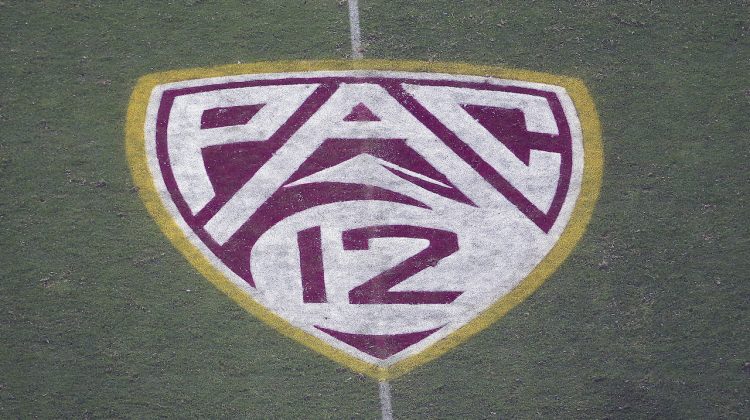Please note: Some questions have been edited for clarity and brevity.
Some of the departing Pac-12 schools have games scheduled against teams that will soon be conference opponents. Will the newly-created openings for non-conference dates be filled by matchups against former Pac-12 teams? Are certain teams likely to avoid each other in the future? — @DOUGINTUCSON
I’m not sure Cal is eager to schedule UCLA anytime soon, and relations in the Pacific Northwest are a bit rocky. But generally speaking, the Hotline hasn’t detected a level of animosity that would preclude Pac-12 football programs from scheduling home-and-home series with each other.
As we see it, three issues will govern non-conference strategy:
— The impact on College Football Playoff access, which won’t be clear until the selection process is finalized for the CFP contract cycle that begins in the 2026 season.
— The desire to play non-conference road games as close to campus as possible given the long trips so many schools must make within league play.
— The need for a regular presence in California generally, and Southern California specifically, because the state will remain the primary recruiting ground for most schools in the western third of the country.
Washington and Oregon will have conference games in Southern California and face pressure to continue their annual dates with Washington State and Oregon State.
Cal and Stanford could be leery of flight time. As the only members of the ACC’s western wing, they will have massive travel commitments.
In our view, the Four Corners schools carry the greatest amount of schedule intrigue.
The Arizona schools and Utah, in particular, will be eager to play in Los Angeles.
Arizona State is essentially booked through the rest of the decade and doesn’t have any home-and-home series scheduled with current Big 12 teams, according to FBschedules.com. So the Sun Devils could be limited in their options to play the California schools.
Arizona has four dates with programs that will become conference opponents starting next fall: Kansas State in 2024-25 and Brigham Young in 2026-27.
Colorado’s situation is identical, with four games on the books: Houston in 2025-26 and Kansas State in 2027-28.
There’s no guarantee the Big 12 will decide to turn those matchups into league games; they might remain on the schedule as non-conference matchups, thus limiting Arizona’s ability to schedule the California schools.
Utah’s situation is more complicated — and potentially more advantageous.
The Utes are scheduled to play Baylor next season and Houston in 2026-27, and they have six games against arch-rival BYU — a total of nine dates that could be turned into conference affairs.
Would Utah prefer a few home-and-home series against USC or UCLA, or even San Diego State? Probably. But it’s not that simple. Everyone is wary of schedule overload.
Many high-level football programs follow the A-B-C model in which a balanced non-conference schedule features a Power Five opponent, a Group of Five opponent and an FCS opponent.
The Utes went A-A-C this season with both Florida and Baylor, but that isn’t necessarily optimal.
Given the presence of Arkansas and Wisconsin on the schedule in upcoming years, coach Kyle Whittingham and athletic director Mark Harlan will have to be judicious if the Big 12 schedule creates non-conference flexibility and the California schools have an interest in home-and-home series.
As I struggled to stay awake through the Pac-12 night games last weekend, I wondered how the new rules have affected the length of games so far. Any numbers yet, or is it too early? — @AlWasser1
It’s early, but Yahoo offered the following national data earlier this week on the running clock rule:
— three or four fewer offensive snaps per game
— six or seven fewer total plays (including special teams)
— five minutes of reduced game time
Over a 12-game season, that equates to about 80 fewer total plays per team.
Remember one of the reasons for the rule change: Offsetting the increase in total snaps that will come with the expanded playoff.
Teams that reach the title game could end up playing 17 games, which is difficult to justify under any circumstances — but slightly more palatable if the regular-season grind is minimized.
Can you lay out the case for the Mountain West teams dissolving their conference and joining the Pac-12? What would happen to the existing MW media deals? Which teams would make the transition? Would any get left behind? — @RockDawg3
The case is based on brand value: Even in its depleted state, the Pac-12 brand is stronger than the Mountain West brand. Keep the Pac-12, and any new schools would share the conference’s impressive history with Washington State and Oregon State.
In this scenario, the Mountain West schools would vote to dissolve their league, thus eliminating any exit fees, and move into the Pac-12 — presumably in time for the 2024 football season … and with MW commissioner Gloria Nevarez in charge.
(One way or another, Pac-12 commissioner George Kliavkoff will be out of a job next summer, if not sooner.)
Obviously, the media contract is critical. The MW’s current deal with Fox and CBS expires in the spring of 2026. Maybe the networks would agree to keep the terms but simply shift the deal to the Pac-12 (while accounting for the increase in teams, from 12 to 14, and game inventory).
Legally, any nine schools could vote to dissolve the MW and move into the Pac-12, all while leaving three homeless. But that would create an 11-team conference under the Pac-12 banner. Not ideal.
Our hunch is that a reverse merger of this nature — if it happens — would include every team currently in the MW.
It looked like the Pac-12 Network would be a casualty of the conference implosion. But could it be an asset going forward in media rights talks with Apple, CBS Sports and other streamers looking to carry college sports? — @pfnnewmedia
The Pac-12 Networks have the infrastructure to produce all the football games a streaming partner would want and could be an attractive piece of any negotiations.
Of course, that process would depend on WSU and OSU deciding to rebuild the conference, and we are a long way from that point.
Certainly, the legal action is an obstacle. But the conference office has been slow to provide the Cougars and Beavers with the essential financial information — the Pac-12 Networks’ assets and liabilities are part of the calculation — needed to make their decision.
Is the holdup due to murky bookkeeping, a procedural matter, obstinance or incompetence? We cannot say. But the two schools are frustrated.
Does commissioner George Kliavkoff not have a point in his Sept. 8 letter to Washington State and Oregon State? The “notice of withdrawal” clause was aimed at schools literally leaving the conference prior to Aug 1, 2024. The ten departing schools are not leaving (or withdrawing) prior to that date. — @BruinStrmShadow
That’s for the court and the attorneys to determine, but here is the relevant section in the bylaws:
“No member shall deliver a notice of withdrawal to the Conference in the period beginning on July 24, 2011, and ending on August 1, 2024; provided, that if any member does deliver a notice of withdrawal prior to August 1, 2024, in violation of this chapter, the Conference shall be entitled to an injunction and other equitable relief to prevent such breach …
“Additionally, if a member delivers notice of withdrawal in violation of this chapter, the member’s representative to the CEO Group shall automatically cease to be a member of the CEO Group and shall cease to have the right to vote on any matter before the CEO Group.”
USC, UCLA and Colorado were removed from the board upon announcing their departures for new leagues.
Our sense is that precedent will be as important to the ultimate decision as the exact wording in the bylaws.
Should a two-loss Pac-12 champion make the College Football Playoff? — @saltlakeshirts
If there was ever a year, 2023 would be it. With eight ranked teams and a 20-3 non-conference record, the Pac-12 is arguably the best conference in the land.
Of course, the number of one-loss teams in other leagues would be a factor, as would the nature of the Pac-12 team’s two defeats. They would have to be high-level losses: close calls against ranked opponents.
And they would have to come in the regular season, because a two-loss non-champion would have zero chance.
Let’s say USC shows well in road losses to Notre Dame and Oregon, has four or five victories over ranked opponents and wins the Pac-12 title. In that scenario, the Trojans (12-2) might have a shot.
But remember: No two-loss team has ever made the CFP, and we would be surprised if the Pac-12 became the first conference to do it.
Did you see the TV ratings for Washington State’s victory over Wisconsin? Why doesn’t anyone realize WSU’s media market is Seattle? — @MattMayhew
We saw the ratings, yes. And we have seen the multi-year audience data for Washington State. The numbers are higher than every Pac-12 school headed to the Big 12.
And guess what: ESPN and Fox have seen those numbers, too. They know exactly how many eyeballs are on a typical WSU game.
The Cougars weren’t left behind in the realignment game because they have poor viewership or a third-rate football program.
They were left behind because of the combination of average viewership, poor geography and a football brand that isn’t on the top shelf (alongside Washington and Oregon).
They were not must-haves, and other schools fit better in various categories.
Stanford and Cal fit better academically in the ACC.
The Four Corners schools fit better geographically in the Big 12.
The L.A. schools, Oregon and Washington fit better in both brand and market size in the Big Ten.
WSU’s viewership data, while better than many fans realize, was part of a broader calculation.
Conferences like the Mountain West and American have early departure fees/fines. Does the Pac-12 have such language in its bylaws? If not, why? Is it smugness, thinking no one would want to leave the “Conference of Champions”? — @cubsfan7331
There are no exit fees or penalties in the bylaws, which could be viewed, as you noted, as another sign of Pac-12 arrogance and mismanagement.
The only financial stipulation calls for departing members to forfeit their media rights revenue from the time of departure to the end of the grant-of-rights contract on Aug. 1, 2024.
But none of the outgoing schools are leaving before the contract term expires, so they won’t forfeit any cash.
Has the upper limit of so-called Cali-mony been set? Or is it possible to go over $10 million? — @JackDorseysmok1
For those unfamiliar, the University of California Board of Regents has retained the authority to force UCLA to subsidize Cal’s athletic department (using revenue from its Big Ten media contract).
The regents’ measure reads as follows:
“The President will return to the Regents at a future meeting, after Pac-12 media agreements are finalized, with a recommendation for a contribution by UCLA to the Berkeley campus in the range of $2 million to $10 million, to be used to enhance student-athlete support at that campus.
“Such recommendation will be based on the best available information on projected revenues for both campuses. The Board of Regents will have final approval over the contribution amount.”
The regents can do whatever they want within the framework of their policies and procedures. Since they voted to create the so-called Berkeley tax (or Cal-imony) in the first place, there’s nothing stopping them from raising the ceiling beyond $10 million.
But the Hotline doesn’t expect that outcome. What we expect, rather, is a subsidy in the upper half of the established range.
If you could see all of the documents and emails from the discovery phase of the lawsuit brought by WSU and OSU, what would you be most interested to see? I’d like to see the actual viewership numbers for the least popular sports events on the Pac-12 Network. — Daniel Nys
I can answer that question for you: Many of the Olympic sports events on the Pac-12 Networks generate no more than hundreds, or a couple thousand, viewers.
They are friends-and-family sports that don’t come close to producing audience levels that justify the immense cost of the networks’ six regional feeds over a 12-year period.
As for our discovery phase wish list, so to speak, the Hotline would be quite interested in the details of the media rights negotiations from the late summer and fall of 2022, when the Pac-12 could have cut a deal with ESPN but declined the option.
Do you think Washington State and Oregon State will eventually prevail in their legal dispute? — @TWamsgans
The attorneys are attempting to schedule a preliminary injunction hearing, which is designed to clarify the makeup of the Pac-12 board, for late September or early October.
But the smart money is on a negotiated settlement.
Neither wants discovery.
Related posts:

(AP Photo/Ralph Freso, File)
Wilner Hotline – Friday Pac-12 Mailbag Hotline mailbag: Peeking at the ’23 schedules, expansion timeline, buyer’s remorse in L.A.(?) and loads more
Hotline mailbag: Peeking at the ’23 schedules, expansion timeline, buyer’s remorse in L.A.(?) and loads more
 Wilner: Kliavkoff’s risky strategy, an alternate Pac-12 universe (with ESPN), the MLS on Apple, unequal revenue shares and more
Wilner: Kliavkoff’s risky strategy, an alternate Pac-12 universe (with ESPN), the MLS on Apple, unequal revenue shares and more

(AP Photo/Chase Stevens)
Selection Sunday winners and losers: Pac-12 escapes embarrassment as ASU joins USC, UCLA and Arizona in the NCAA men’s field

